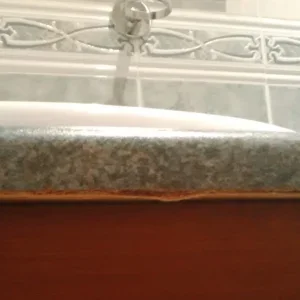The Ligna 2009 exhibition in Hannover in May 2009 marked a watershed for the company known to everybody simply as ‘Vits’.
It was on May 20, during the show, that Vits Systems GmbH became Vits Technology GmbH, marking a change of ownership of this long-established company – and at the same time, a return to former ownership.
Werner Deuring, an Austrian entrepreneur with a history in the panel machinery industry, first bought the company in 2002. He sold his shares to an investment company in 2006 but remained as managing director.
On March 26, 2009, Vits Systems GmbH went into controlled receivership after battling with liquidity issues in recession-hit markets and a lack of willingness on the part of the banks and investors to inject further funds into the company.
Clearly Mr Deuring still had strong faith in Vits and on May 20, 2009 he reacquired 100% of the shares in the business and renamed it Vits Technology GmbH.
Nothing else has changed substantially. The company still designs and manufactures impregnation lines for decorative papers in the panel industry and supplies converting lines in many other industries, such as automotive filter paper, masking tape and glass-fibre non-wovens.
Resin mixing and blending systems supplier IFA, Vits America and Vits Imaco (the Chinese arm of Vits technology GmbH) were unaffected by the insolvency of Vits Systems.
“The management team is essentially the same as before,confirmed sales and marketing director Daniel James. “We have had to reduce overall staff numbers across the business due to a large decrease in orders for paper impregnation lines between Summer 2008 and Ligna 2009 and because our other business units, metal treatment and offset printing, have heavily under-performed.”
In fact, in August 2009, Vits divested its metal treatment division, which provided coating for steel and aluminium strip to be used in white goods manufacture (such as washing machines) and in making car bodies, among other things.
“We are now concentrating on our core businesses of paper impregnation – and converting lines (as well as dryers and format sheeters) for the printing industry,said Mr James. “However, in spite of the staff cuts, all key technical personnel in design, R&D and service have been kept on.”
Working with Mr James are sales managers Jörg Mellin, Mariusz Maciejewski and Peter Hauer.
“Customer contact with sales and after-sales service thus remains the same and the engineers that go out to customers are the same ones that have visited them for 15 years or more – the faces have not changed,said Mr James. “And this is very important as many of our sales represent repeat business.”
The new company took two orders at the 2009 Ligna exhibition. One was being commissioned in Iran in late September, while the second was still in progress. A sizeable order was received from China in September and another, larger, order came in from Turkey. However, Mr James said, when interviewed in early October at the Langenfeld headquarters, that these orders could only be seen as “spikes”, there being no clear trend in the global market this year, even though more enquiries were being received at the time than at the same time last year.
Vits latest development, the super-fast HighLine, initially previewed at Ligna 2007, has recently been installed and commissioned at an MDF factory in Turkey and received official customer acceptance in early October 2009. The line is capable of running at over 100m/minute, sheeting melamine films for flooring.
The problem in the past has been to achieve such speeds without rewinding at the end of the impregnation line – highspeed handling of sheets of impregnated paper was the difficult part of the operation.
“Due to a new suction cup linear-driven stacking system, developed with the customer, the line has now broken the 100m/min barrier and during the acceptance test actually ran at 105m/minute for a complete eight-hour shift. Nobody has achieved that kind of performance before,said Mr James proudly.
“Using this new system, and other modifications, we can double the speed of many installed melamine lines, if required. Thus a mill could replace six existing lines with three by simply upgrading them, or it could invest in a new HighLine.”
Phenolic lines are of course capable of running at much higher speeds than melamine ones and Vits had just finished commissioning such a line at a panel mill in Austria. This can run at over 200m/minute, sheeting and stacking directly on to pallets.
Phenolic lines from Vits which rewind onto rolls, instead of sheeting on pallets, already run at speeds of up to 300m/minute, according to Mr James.
Of course research and development (R&D) wait for no man, even in quiet markets, and Vits is working on new systems for intermediate coating between somewhat in the last couple of months and things were now looking quite good. “China seems to be the driving force as far as investment goes at present,he said.
Meanwhile, resin mixing systems manufacturer IFA in Rain am Lech in Bavaria has experienced slow business in the impregnation field where it is heavily dependent on Vits. However, in other areas, such as building products, diversification over the last couple of years seems to have paid off. The company was recently awarded two large contracts to deliver mixing systems to the gypsum board market.
Vits has had a turbulent time this year but emerged from Ligna with orders and a new owner convinced of its long-term viability – and with the nerve to weather the current storm and to build on a solid reputation in the company’s specialist fields of operation.






